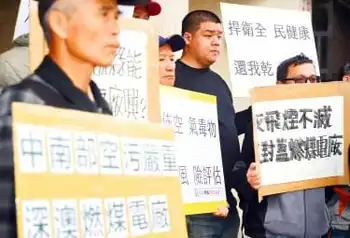Six Kansas communities vie for energy savings
By Wichita Eagle
Substation Relay Protection Training
Our customized live online or in‑person group training can be delivered to your staff at your location.

- Live Online
- 12 hours Instructor-led
- Group Training Available
The Climate and Energy Project is sponsoring a contest to see which of the communities — Mount Hope/Haven, Kinsley, Quinter, Merriam, Salina or Wellington — can save the most energy in a year.
The residents have responded in big and small ways.
Keala Timko and her husband are remodeling their house in Wellington with energy-efficient windows and better insulation.
Stacy Rogers of Mount Hope is now using compact fluorescent lightbulbs instead of incandescent bulbs.
Laurie Gooding of Mount Hope times her kids' showers and rewards the quickest shower-taker.
When the yearlong "Take-Charge Challenge" ends in April, they will find out how much energy their efforts have saved.
"Regardless of who wins the challenge, everybody is winning because if everybody does one thing it will decrease our dependence on electricity and gas," said Gooding, also a Mount Hope City Council member.
The Climate and Energy Project, a nonprofit organization that is trying to make the Midwest more energy efficient, chose the six communities because utility companies identified them as places with high-energy usage.
Mount Hope and Haven were paired because they share the same school district.
The winning community gets to choose an energy-saving prize: a solar panel for a city building, a wind turbine for a school or $10,000 to use toward an energy efficient project for the city.
Kansas does not rank very high in energy efficiency, said Dorothy Barnett, director of statewide relations for the Climate and Energy Project. The contest, she said, is a way to show Kansas communities that it is not painful to save energy.
"It doesn't require a huge sacrifice," she said. "It's more common-sense measures."
The yearlong challenge is divided into four quarters, with each focusing on an everyday way to save energy.
From April to July, residents were encouraged to change five incandescent lightbulbs in their house to compact fluorescent bulbs.
Salina-based Philips Lighting donated 3,000 compact fluorescents for the challenge — about 500 bulbs for each community.
In Mount Hope, residents such as Rogers have noticed a financial difference. By using compact fluorescent bulbs and other energy-saving measures, Rogers estimates her family will save $50 to $100 a year.
"Regardless of the environmental factor, it makes sense just to conserve from a financial standpoint," she said.
The challenge is based on kilowatt reduction, Barnett said. Energy saved is documented on a per-capita basis, so a larger community does not have an advantage over a smaller one.
The next quarter of the challenge will focus on weatherizing houses and making them more energy-efficient.
At quarterly kickoff events in each community, residents are learning how to get rid of energy leakage in homes by caulking windows and weather-stripping doors.
Money from the federal economic stimulus package has helped beef up the state's Weatherization Assistance Program, which helps income-eligible families weatherize their homes.
The Kansas Power Pool, the utility partner for Wellington and Mount Hope, is also using a program providing cash rebates for exchanging old appliances for more energy-efficient ones.
In Wellington, city staff is also performing free energy audits to help people learn where energy is being lost in their homes.
"As we continue to look at new sources of energy, why not conserve what we have?" said Gus Collins, Wellington city manager. "Why not consider that an alternative as well? Maybe that combination will have a huge impact in the future."
The ultimate goal for each community is to win. But city officials have other goals as well.
"If we can see a 5 percent reduction (in energy use), I would be very pleased with that," said George Dick, the Mount Hope city clerk.
Even utility companies are encouraging residents to save energy, a somewhat contradictory idea.
"Our goal is to provide the lowest cost to our energy customers," said Colin Whitley, general manager of Kansas Power Pool. "One of the most common-sense ways to do that is to conserve energy."
Barnett already plans to make next year's challenge bigger. She said she hopes this year's challenge can serve as an example to other communities nationwide.
"If we can show that six Kansas communities can have fun and do their share to help the environment, that's a story we can tell to everyone," she said.











